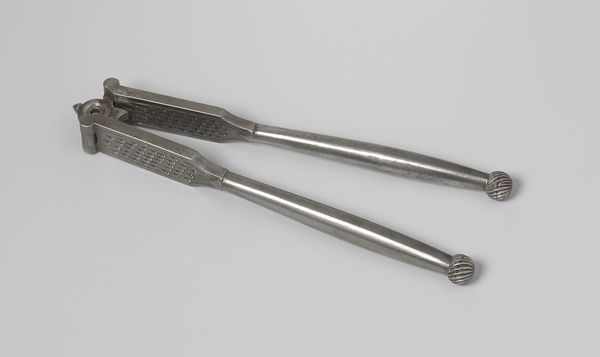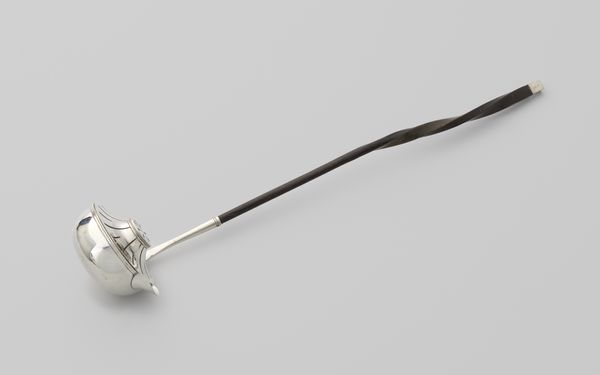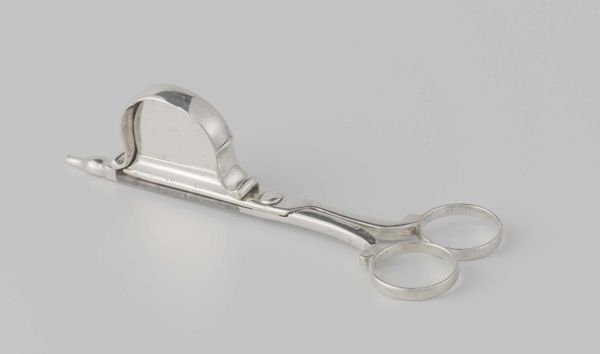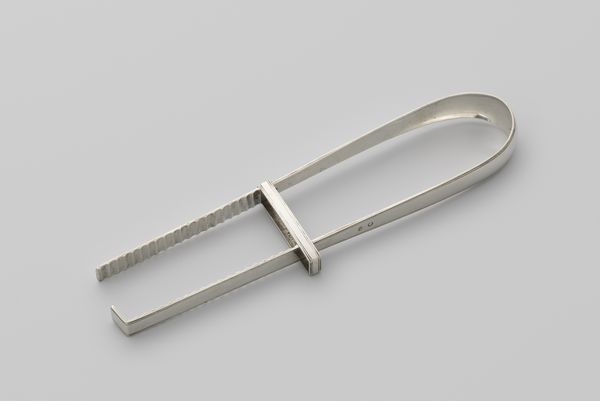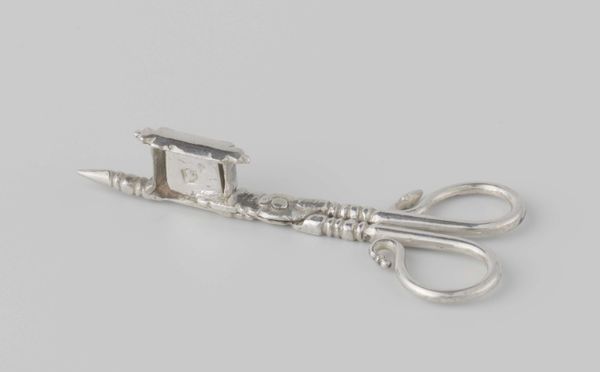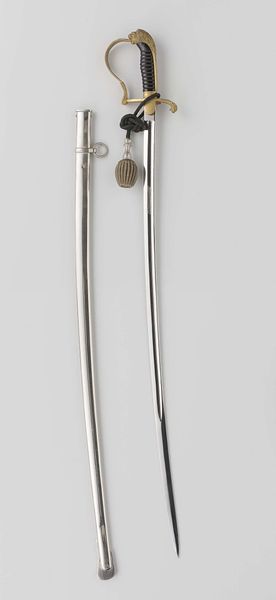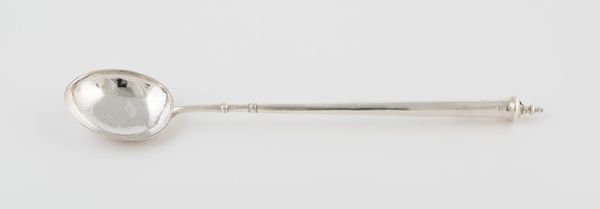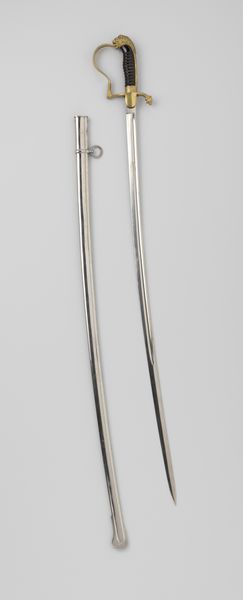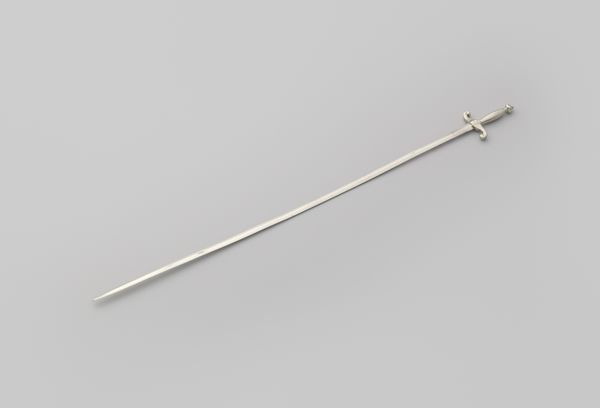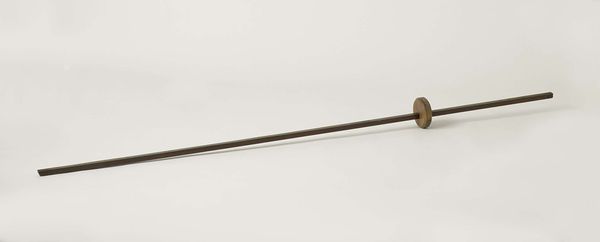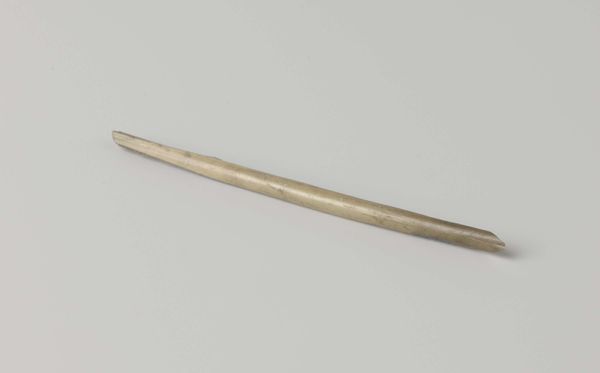
silver, metal, photography
#
silver
#
metal
#
photography
Dimensions: length 10.8 cm, width 2.4 cm
Copyright: Rijks Museum: Open Domain
Curator: It’s such an elegantly crafted object, wouldn’t you agree? This is a pair of sugar tongs, known as “Haardtang,” made from silver, sometime around 1788. Editor: Absolutely. There's a delicate precision to it, a sort of understated grace. I find myself thinking about the performative aspects of handling something like sugar. The subtle flex of the tongs, the considered placement—it all speaks to rituals around consumption and status. Curator: Indeed, considering that sugar production in the late 18th century was deeply entangled with colonialism and the transatlantic slave trade, the ritual itself carries significant weight, especially when considering the users and makers of luxury commodities like this. Sugar became widely available, but what were the social costs of satisfying that sweetness? Editor: That's a crucial point. Were these tongs designed to mask the origins of the product it handles? Do its graceful curves belie the brutal realities of labor that produced the very commodity it was made to serve? One could argue it aestheticizes that relationship, normalizing an unjust system of global exchange. Curator: And what does it tell us about the identities of those who owned and used such objects? In the drawing rooms and dining tables of Europe, sugar tongs such as this weren't just functional tools. They signaled refinement, privilege, a certain level of social distinction—especially for women tasked with maintaining their households. Editor: Precisely. Consumption, presentation, and domesticity were intimately linked. The silver reflects not just wealth, but also specific expectations placed upon women. How their performances of 'good taste' reinforced a gendered social order. It goes far beyond simple elegance, then, to speak to the intricate choreography of class, gender, and power. Curator: Thinking about that performance reminds me how museums are now reconsidering such domestic objects, highlighting those forgotten stories, broadening their narratives, questioning the role these objects played and continue to play in reinforcing power structures. Editor: And that critical reassessment is crucial, as we use these artifacts as conduits for challenging comfortable, linear art historical accounts. What feels simple is almost always underpinned by profoundly complex issues. It certainly leaves me thinking differently about this small object now.
Comments
No comments
Be the first to comment and join the conversation on the ultimate creative platform.
